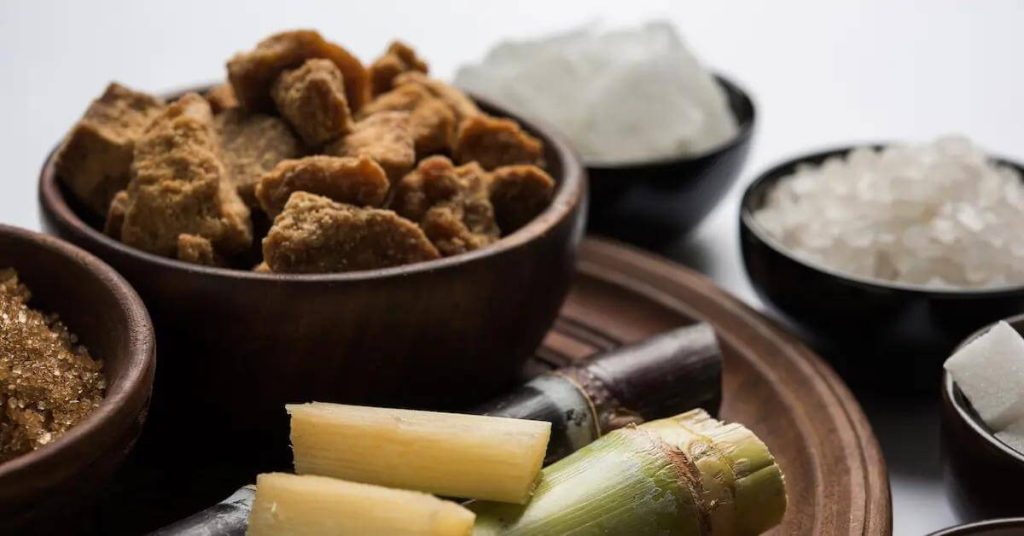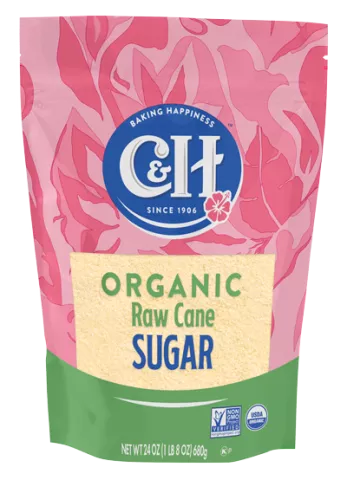Cane Sugar Processing: Key Technologies for Superior Sugar Manufacturing
Cane Sugar Processing: Key Technologies for Superior Sugar Manufacturing
Blog Article
A Comprehensive Guide to the Environmental Effect and Sustainability Practices in Walking Cane Sugar Processing
The ecological influence of walking stick sugar handling offers a complex selection of challenges that warrant mindful exam. From soil destruction and excessive water use to the carbon impact connected with farming and manufacturing, the consequences of conventional methods are far-ranging. What specific techniques can be carried out to strike a balance in between productivity and ecological stewardship?
Review of Walking Cane Sugar Handling
Walking cane sugar processing involves a collection of organized steps that transform sugarcane into polished sugar. At first, harvested sugarcane is carried to processing facilities, where it undertakes cleansing to get rid of dirt and particles. Following this, the walking cane is squashed to draw out juice, which is then made clear by eliminating pollutants via heating and the addition of lime.
The cleared up juice undergoes dissipation, where water is eliminated to concentrate the sugar web content. These crystals are divided from the remaining syrup making use of centrifugation, resulting in raw sugar.
The last item is then dried out and packaged for circulation. Throughout this entire process, maintaining effectiveness and high quality control is necessary to make sure the sugar satisfies industry criteria. Each action in walking stick sugar handling not only adds to the end product but likewise has implications for source usage and waste generation, establishing the stage for conversations on sustainability and ecological impacts related to sugar manufacturing.
Environmental Difficulties of Production
The production of walking stick sugar offers several significant environmental challenges that warrant interest. One main issue is the extensive use agrochemicals, including pesticides and fertilizers, which can result in dirt degradation, biodiversity loss, and contamination of regional water resources. The drainage from sugarcane fields typically lugs these chemicals into close-by environments, interfering with aquatic life and influencing the health of communities reliant on these water bodies.
An additional challenge is the high power usage related to sugarcane processing. The boiling and refining phases call for substantial heat, mainly created by melting nonrenewable fuel sources, adding to greenhouse gas emissions. Additionally, the extensive land location required for sugarcane growing can cause deforestation and habitat destruction, additional aggravating climate modification and threatening wild animals.
Moreover, the labor practices in some regions increase honest worries, as workers may deal with bad working problems and poor earnings. This scenario often bolsters a cycle of hardship in neighborhood communities. Cane Sugar Processing. Resolving these environmental challenges is crucial for creating more lasting methods in walking cane sugar production, ultimately profiting both the environment and the areas included in this industry
Water and Land Usage Impact
Water resources and land application are important components in the walking stick sugar sector that substantially influence the environment. The growing of sugarcane calls for substantial water input, with quotes recommending that it can eat up to 2,000 liters of water per kg of sugar generated. This extensive use of water typically leads to depletion of regional water sources, influencing not just the sugarcane ranches however additionally bordering environments and communities that count on the same water sources for agriculture and residential use.

Furthermore, land usage for sugarcane cultivation can lead to logging and the conversion of natural environments into monoculture plantations. This technique reduces biodiversity, disrupts neighborhood communities, and adds to dirt degradation. The development of sugarcane fields usually encroaches on beneficial agricultural land, producing competition for sources between food and biofuel manufacturing.
Sustainable techniques, such as optimizing watering techniques and applying crop turning, are important to alleviate these impacts. By embracing extra efficient water usage and land monitoring methods, the cane sugar sector can decrease its eco-friendly footprint, guaranteeing an equilibrium between farming productivity and ecological preservation.
Greenhouse Gas Emissions
Greenhouse gas emissions stand for a considerable ecological concern within the walking stick sugar handling industry, specifically as agricultural methods increase to satisfy international demand. The cultivation of sugarcane, a plant that flourishes in tropical environments, depends heavily Related Site on artificial fertilizers and chemicals, which contribute to laughing gas emissions. In addition, land-use changes, including logging for new sugarcane haciendas, release carbon dioxide stored in greenery and dirt.
Throughout handling, power intake is an additional significant source of greenhouse gas discharges - Cane Sugar Processing. Lots of sugar mills use fossil fuels to power machinery and create warmth, causing considerable carbon impacts. Furthermore, the transportation of raw sugarcane and completed items includes layers of emissions through fuel combustion in vehicles
This entails examining existing agricultural methods, processing techniques, and transport systems to determine areas for renovation and mitigation. Dealing with greenhouse gas discharges is necessary for fostering a much more lasting walking cane sugar industry in an altering environment.

Sustainable Practices and Innovations
Lasting methods and developments are increasingly essential in the walking stick sugar handling sector as stakeholders seek to reduce ecological effects while preserving productivity. One substantial innovation is the application of integrated plant management, which maximizes resource usage by integrating soil monitoring, bug control, and crop turning strategies. This technique enhances return while lessening chemical inputs and protecting dirt health and wellness.
In addition, the adoption of renewable resource resources, such as biomass from sugarcane residues, has actually acquired grip - Cane Sugar Processing. By transforming waste products right into power, processing centers can reduce their reliance on fossil gas, thereby reducing greenhouse gas emissions
Water administration techniques have likewise seen renovations through the recycling and reusing of water in processing plants, dramatically decreasing freshwater intake. Developments in innovation, such as accuracy agriculture, allow farmers to monitor crop health and wellness and source usage better, making sure lasting cultivation practices.
Moreover, certification programs like Fair Trade and Rain forest Partnership encourage ecologically liable farming techniques and promote social equity within the supply chain. By embracing these sustainable techniques and developments, the walking stick sugar handling industry can boost its strength and contribute positively to environmental stewardship.
Final Thought
The environmental influence of walking cane sugar handling presents considerable difficulties, including soil deterioration, high water usage, and greenhouse gas discharges, along with moral concerns connected to labor practices. Addressing these issues with sustainable practices, such as integrated crop management, renewable energy fostering, and water recycling, is important. By advertising socially equitable and ecologically accountable techniques in sugar manufacturing, the sector can alleviate its damaging results, making certain an extra lasting future for both neighborhoods more information and communities associated with this sector.
Walking cane sugar handling includes a series of systematic actions that change sugarcane into refined sugar. Each action in walking stick sugar processing not only adds to the last item however also has implications for source use and waste generation, establishing the phase for discussions on sustainability and ecological effects connected with sugar dig this manufacturing.
Greenhouse gas discharges represent a considerable environmental problem within the walking stick sugar handling market, specifically as agricultural techniques increase to meet international demand.Lasting practices and advancements are progressively essential in the walking stick sugar handling industry as stakeholders look for to reduce environmental influences while maintaining efficiency.The ecological impact of cane sugar handling offers significant difficulties, consisting of soil deterioration, high water intake, and greenhouse gas emissions, together with moral issues related to labor practices.
Report this page